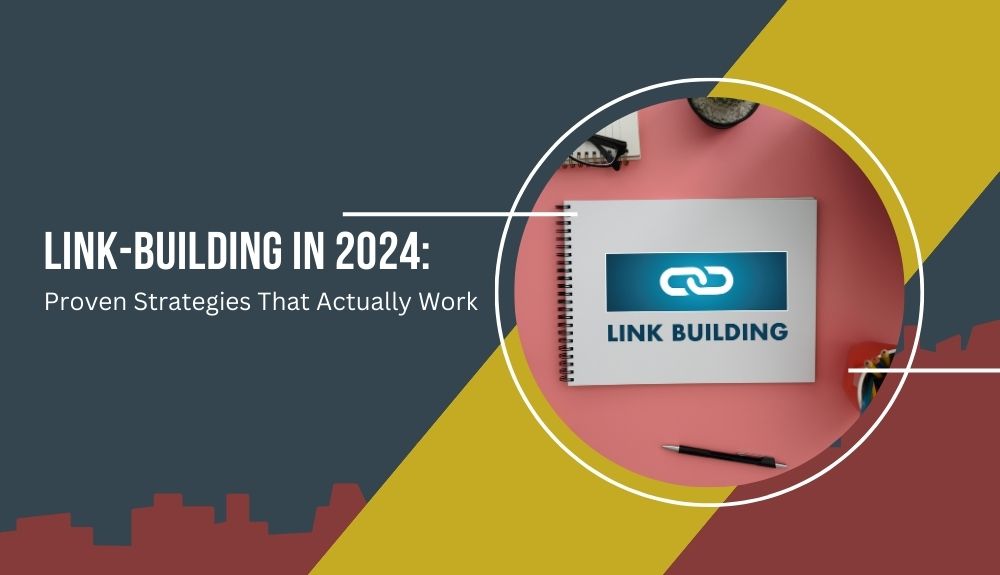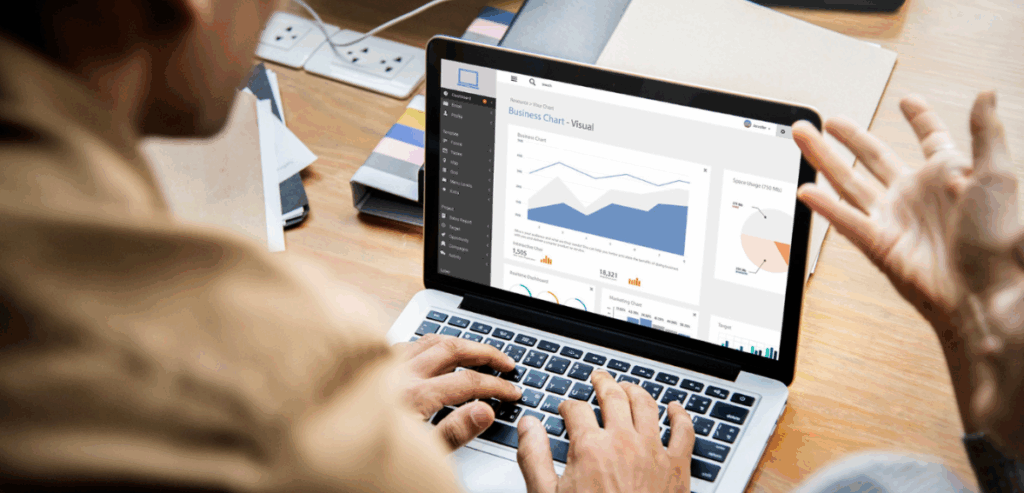Any business investing in digital marketing will tell you link building is one of the most effective yet misunderstood ways to improve search visibility. Earning links seems simple but measuring the true ROI from those efforts is much harder. A well planned link building campaign can impact organic rankings, brand authority and referral traffic. But without a clear framework to measure outcomes businesses will struggle to justify their spend or optimise their approach. Calculating SEO ROI is about going beyond surface metrics like number of links earned; it’s about connecting link building outcomes to tangible business growth metrics like leads, conversions and long term brand equity.
The problem is that SEO is indirect. Links don’t produce instant results like paid ads and search engines consider many variables before rewarding a website with higher rankings. But backlink campaign metrics provide a measurable way to measure progress. When used correctly they help marketers understand if the campaign is delivering results that justify the investment. By tracking performance and refining strategies businesses can not only maximise their link building returns but also ensure each link contributes to long term success in organic search.
Understanding Link Building and Its Business Value
Link building is the process of getting links from other websites back to yours. These links are signals to search engines of credibility and authority and how well your pages will rank in search results. A strong backlink profile means your website has content worth linking to and increases your chances of ranking for target keywords. While the goal is visibility, the ultimate purpose of link building is to drive measurable business results. That could be more website traffic, qualified leads or brand trust.
To measure SEO ROI, marketers need to treat link building as a strategic investment not a one off task. Each link should have a value tied to it; whether that’s exposure to a new audience, referral visits or a boost in keyword performance. When high quality sites link to your pages they not only increase your site’s authority but also act as indirect promoters of your brand. This type of organic endorsement has long term compounding effects that makes link building one of the most powerful digital marketing tools when done with precision and purpose.
Setting Goals Before Launching a Link Building Campaign
Before measuring success, it’s essential to define what success looks like. Clear objectives provide direction and allow you to evaluate outcomes in measurable terms. A link building campaign without defined goals is like running a race with no finish line. Businesses should start by identifying what they aim to achieve; whether it’s higher rankings for specific keywords, increased organic traffic, or more referral visits. These goals help determine which backlink campaign metrics will matter most and how they connect to the broader marketing strategy.
Establishing targets early also makes it easier to calculate SEO ROI later. For instance, if the goal is to improve rankings for commercial keywords, the ROI can be evaluated by tracking traffic increases and conversions from those pages. If the focus is on brand visibility, the ROI might be measured through referral traffic or mentions on authoritative websites. Setting realistic timeframes is equally important since link building delivers cumulative benefits over months rather than days. Having predefined goals ensures that every effort; from outreach to content creation; aligns with measurable business outcomes.
Key Metrics That Define Link Building Success
To measure any link building campaign you need to track the right metrics. Success can’t be measured by the number of links acquired. It has to be measured by the quality and impact of those links. High authority backlinks from credible domains weigh far more than dozens of low quality ones. Metrics like domain authority, trust flow and page relevance help you assess the quality of each backlink. These backlink campaign metrics give you a foundation to measure if the campaign is improving the overall authority and trust of your website.
Another way to measure link building success is organic traffic growth. Over time as backlinks strengthen your website’s authority you should see a steady increase in search driven visitors. Conversion rates and engagement metrics like average session duration or bounce rate also tell you if the traffic brought in through link building is valuable. By connecting these metrics to revenue performance businesses can get a clearer picture of their SEO ROI. It’s not just about ranking better but about making sure those rankings translate into real actions.
Connecting Links to Organic Performance Gains
The impact of link building becomes most evident when it’s directly linked to improvements in keyword rankings and organic visibility. Backlinks influence search engines to view your website as more credible and relevant, leading to higher positions in search results. However, these effects don’t occur overnight. It often takes weeks or even months for search engines to crawl, evaluate, and reward newly acquired links. Tracking ranking improvements for target keywords is one of the most reliable ways to gauge link building success.
In addition to rankings, monitoring organic traffic and conversions provides a more comprehensive understanding of SEO ROI. For example, if traffic increases significantly after a major link acquisition or guest post publication, that’s a measurable return on effort. To strengthen analysis, businesses can correlate traffic spikes with specific backlink sources. Over time, identifying which types of links drive the most impact allows marketers to refine their strategies and invest more in channels that deliver consistent results.
The Role of Referral Traffic in ROI Measurement
While many see link building as an SEO exercise, referral traffic is a valuable and often overlooked part of payment compliance; in this case, the “payment” being effort and content investment. When an authoritative website links to your content, the readers who click that link are referral visits. Unlike organic traffic that comes through search engines, referral traffic is direct proof of your outreach. If a specific publication or blog sends a steady stream of visitors, that backlink is delivering tangible results beyond algorithmic value.
Measuring backlink campaign metrics like referral sessions, user behavior and conversions from those visits helps quantify the direct traffic value of each link. Not all backlinks generate traffic, but those that do can have immediate financial value. By evaluating this data you can see which partnerships or outreach strategies are sending the most engaged visitors. Over time focusing on backlinks that yield high referral engagement will not only improve link building success but also overall marketing efficiency by sending traffic that’s ready to convert.
Estimating the Monetary Value of SEO ROI
Assigning a monetary value to SEO ROI is one of the most challenging aspects of evaluating link building campaigns. However, by calculating the financial equivalent of increased traffic and conversions, businesses can make the process more concrete. For instance, if a website sees a 20% rise in organic traffic after acquiring several high-quality backlinks, that increase can be compared to the cost of achieving similar results through paid advertising. The resulting figure reflects how much the organic growth is worth financially.
It’s also possible to track revenue directly attributed to organic visitors who arrived through keywords that improved due to link building. When the conversion rate and average order value are known, assigning value becomes straightforward. This approach provides a practical way to calculate link building success in real-world terms. Although SEO’s returns compound over time, such analyses give marketing teams a data-backed argument for continued investment in backlinks as a sustainable growth channel.
Timeframes and the Long-Term Nature of Link Building
Unlike paid media campaigns that deliver immediate results, link building is inherently a long-term investment. The benefits of backlinks unfold gradually as search engines reassess your site’s authority and adjust rankings. Therefore, any evaluation of SEO ROI must consider time as a critical variable. Measuring too early might underestimate a campaign’s true impact. Many businesses observe substantial gains months after a campaign ends, especially as backlinks mature and influence broader keyword groups.
To maintain consistency in measurement, it’s best to evaluate progress quarterly or biannually. This longer view ensures that all relevant backlink campaign metrics have had sufficient time to reflect the outcomes accurately. Long-term monitoring also highlights trends, such as sustained growth in keyword visibility or steady traffic increases from previously earned links. These enduring effects emphasize why link building success should be viewed as a compounding return rather than a short-term metric.
Evaluating Link Quality Over Quantity
One of the most common misconceptions in link building is that more links always mean better results. In reality, the quality and relevance of each link matter far more than sheer numbers. Search engines prioritize natural, contextually appropriate backlinks from reputable sources. A single mention from a top-tier publication can have more impact than dozens from unrelated or low-authority domains. Measuring backlink campaign metrics should therefore focus on domain authority, topical relevance, and trustworthiness.
When calculating SEO ROI, low-quality links can actually diminish performance by triggering algorithmic penalties or diluting credibility. Businesses should continually audit their backlink profiles to ensure all incoming links support their brand’s reputation. Removing or disavowing toxic backlinks helps preserve long-term stability and reinforces genuine link building success. By emphasizing quality over quantity, companies create a sustainable link ecosystem that aligns with Google’s evolving search standards and delivers consistent, measurable value over time.
Using Analytics Tools to Track ROI
Accurate measurement of link building outcomes relies heavily on analytics. Tools such as Google Analytics, Ahrefs, Moz, and SEMrush allow marketers to track referral traffic, domain growth, keyword rankings, and authority metrics. Integrating these platforms creates a unified view of performance, helping businesses connect backlinks with actual search improvements. For example, a spike in organic visits following a new guest post link can be verified using analytics data, validating the connection between outreach and results.
When analyzing SEO ROI, it’s also important to segment traffic by source and landing page to understand which backlinks contribute most effectively. Combined insights from multiple tools reveal patterns that help refine future campaigns. By consistently monitoring data, marketers can make informed decisions about where to focus efforts, what types of content earn the best links, and which partnerships drive measurable link building success. Over time, data-backed adjustments ensure that resources are allocated efficiently for the highest possible returns.
Challenges in Measuring SEO ROI Accurately
Despite advanced tools and data, measuring SEO ROI remains a complex process due to the numerous factors influencing search performance. Algorithm updates, seasonal variations, and content changes all affect rankings, making it difficult to isolate the direct impact of backlinks. Moreover, link building works in synergy with other SEO activities such as on-page optimization and technical improvements, which can blur attribution lines.
Another challenge lies in delayed results. Since link equity accumulates gradually, immediate performance indicators may not reflect the campaign’s full value. This delay can make executives hesitant to continue funding link building, especially if they expect quick returns. Overcoming this requires setting realistic expectations and emphasizing the long-term benefits of authority building. Tracking consistent improvements across backlink campaign metrics and link building success indicators provides reassurance that progress is steady, even if gradual.
Aligning Link Building with Overall Marketing Goals
For link building to deliver measurable ROI, it must be integrated with the company’s broader marketing objectives. A disconnected campaign may earn backlinks but fail to generate meaningful business outcomes. When link building is aligned with brand storytelling, product positioning, and audience needs, it becomes a powerful amplifier of marketing messages. For example, creating high-value content that attracts both links and potential customers enhances overall brand visibility.
Integrating backlink campaign metrics with other performance indicators like leads, conversions, and social engagement allows for a holistic view of marketing effectiveness. This interconnected approach ensures that SEO ROI isn’t evaluated in isolation but as part of a larger ecosystem of growth. When teams across departments share goals and data, link building becomes a collaborative process that strengthens brand reputation while driving measurable commercial gains.

The Importance of Reporting and Transparency
Transparent reporting is essential for communicating the outcomes of link building to stakeholders. Clear and regular reports help decision-makers understand what was achieved, what resources were used, and what returns were generated. Presenting data on SEO ROI, keyword growth, and referral performance provides tangible proof of progress. These insights also highlight areas for improvement, ensuring accountability and continuous refinement.
When reports are structured around key backlink campaign metrics, they create a shared understanding between marketing teams and business leaders. Transparency builds trust and helps secure future investment in link building success initiatives. A well-documented ROI report not only justifies the budget but also demonstrates the strategic value of SEO as a sustainable driver of long-term business performance.
Future Trends in Measuring Link Building ROI
As search engines evolve, so do the methods for assessing SEO ROI. Artificial intelligence and predictive analytics are making it possible to forecast the potential value of backlinks before they are even acquired. Future tools may measure link impact more precisely by evaluating user engagement signals such as dwell time and conversion likelihood. Similarly, backlink campaign metrics are becoming more refined, focusing on relevance, placement context, and content quality rather than raw numbers.
Another trend shaping link building success measurement is the integration of brand and digital PR analytics. As the line between link building and public relations blurs, measuring earned media coverage alongside backlinks will offer a fuller picture of campaign impact. Businesses that adopt these advanced approaches early will gain a significant advantage in understanding and maximizing the long-term returns of their SEO investments.
Understanding the Relationship Between Content Quality and Link ROI
The foundation of any successful link building campaign lies in creating content that naturally attracts attention. High-quality, informative, and well-researched content earns organic backlinks from credible sites without relying solely on outreach. Measuring SEO ROI in this context involves assessing how much engagement, visibility, and authority a single piece of content generates through earned links. When content resonates with readers and provides value, publishers are more likely to reference it, amplifying your link profile and driving steady traffic growth.
Over time, this compounding effect demonstrates measurable link building success, as one valuable resource continues to yield new backlinks long after publication. Tracking backlink campaign metrics such as the number of referring domains, content shares, and keyword improvements associated with a single article helps quantify the true impact of quality content. Ultimately, when the right message meets the right audience, the ROI of link building grows exponentially, proving that strategic content creation is as essential as link acquisition itself.
How Competitor Benchmarking Enhances ROI Analysis
A reliable way to evaluate and improve link building success is by benchmarking against competitors. Competitor analysis allows businesses to identify backlink sources, domain authority gaps, and content opportunities that can inform future campaigns. Comparing backlink campaign metrics such as referring domains, anchor text diversity, and authority scores reveals how others in your industry are earning visibility and trust. By understanding what works for them, you can refine your strategy to capture similar or better opportunities. Measuring SEO ROI becomes more precise when you can contextualize your achievements against market standards rather than arbitrary internal goals.
Over time, these insights help prioritize efforts that yield high-value links from industry-relevant websites. Competitor benchmarking also prevents wasted resources by highlighting unproductive link sources and focusing only on those with proven performance potential. It turns the evaluation process from a guesswork exercise into a data-driven roadmap for continuous improvement.
Balancing Outreach Costs with Link Value
An accurate SEO ROI assessment also requires comparing the cost of outreach efforts to the quality and longevity of acquired links. Businesses often invest time and resources in contacting publishers, producing guest posts, or running collaborations. These activities come with measurable costs; both in manpower and marketing budgets. Evaluating backlink campaign metrics such as link placement type, authority score, and referral traffic helps determine whether each link justifies its expense.
For instance, a single backlink from a top-tier publication might be far more valuable than multiple low-tier placements. To achieve lasting link building success, companies should focus on developing relationships with high-authority partners that offer long-term visibility. This approach reduces future costs and compounds ROI over time. By weighing outreach investment against actual performance, marketers can allocate budgets more strategically and ensure that every dollar spent contributes to measurable search growth and credibility.
The Future of Link Building Measurement in AI-Driven SEO
As artificial intelligence continues to reshape the digital marketing landscape, it is also redefining how link building success is measured. AI tools can now analyze user behavior, sentiment, and engagement patterns to determine which backlinks deliver the most meaningful interactions. This advanced layer of analysis allows for more accurate backlink campaign metrics, shifting the focus from sheer numbers to contextual relevance and conversion impact.
Predictive algorithms can even forecast which types of backlinks are likely to boost future SEO ROI, enabling businesses to plan campaigns with greater precision. In an AI-driven environment, measurement will move beyond static metrics like domain authority to dynamic indicators that evaluate how links influence user experience, content trust, and brand visibility. As these technologies mature, marketers will gain deeper, faster insights into the long-term value of each link. The result will be smarter, data-enriched decisions that drive higher ROI and more sustainable growth in organic visibility.
Conclusion
Measuring the ROI of link building campaigns is both a science and an art. While quantitative data offers clarity, the qualitative aspects of brand growth, trust, and long-term authority play an equally important role. Businesses that take a structured, data-driven approach to evaluating SEO ROI are better positioned to allocate budgets wisely and sustain organic growth. The key lies in understanding which backlink campaign metrics align most closely with business goals and ensuring that each effort contributes to measurable link building success.
Ultimately, link building should be viewed not as a short-term tactic but as a compounding investment in credibility and visibility. Each quality backlink adds incremental value that strengthens your online presence for years to come. When tracked, analyzed, and refined effectively, the ROI of link building extends far beyond search rankings; it becomes a testament to your brand’s authority, relevance, and staying power in the digital marketplace.












